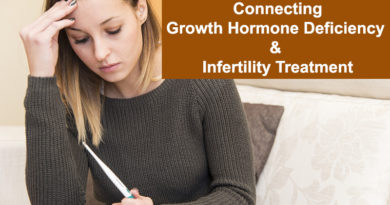Endometriosis Wrecking Your Life? Here’s How to Stop it
For women in their reproductive years, endometriosis can make life feel unbearable. It can disrupt every aspect of life: school, work, family, socializing, finances, mood, and more.
Endometriosis affects an estimated 200 million women worldwide. And while many theories about its causes exist, there is currently no known cause and no permanent cure.
With that said, there are endometriosis treatment options out there. It’s a painful condition, but it doesn’t have to be the end of your world. By communicating with your doctor and taking the necessary steps, you can get your life back on track.

What Is Endometriosis?
Endometriosis occurs when tissue that normally lines the uterus attaches itself to other places outside of the uterus. It is typically found in the pelvic cavity.
What makes the condition even more concerning is that the tissue can attach to any of the female reproductive organs, such as the:
- Fallopian tubes
- Ovaries
- Uterosacral ligaments
- Peritoneum
- Bowel, intestines, appendix, or rectum
- Any tissues between the bladder, uterus, vagina, and rectum
What Can Endometriosis Do to Your Body?
Endometriosis can result in some of the following bodily effects:
- Painful cramps
- Chronic fatigue
- Heavy menstrual flow
- Bowel and urinary disorders
- Nausea and/or vomiting
- Pain during sexual activities
- Infertility
- Long periods
How Is Endometriosis Treated and Managed?
Endometriosis can be treated in a variety of ways. These include hormonal therapy, pain medication, and surgery. These treatments can help you manage your symptoms better and curb some of the other negative effects:
1. Hormonal Therapy
Hormonal therapy can be achieved with birth control pills, progestin drugs, and gonadotropin-releasing hormone (GnRH) agonists and antagonists. The goal here is to stop ovulation, keeping the body in a state of hormonal balance. Ultimately this helps to mask endometriosis symptoms. Combination birth control pills have been used to treat endometriosis since the 1950s. If you choose birth control, your doctor will likely tell you to take it continuously so that you miss your period along with the pain associated with endometriosis.
Progestin-based birth control drugs can lessen endometriosis symptoms by curbing endometrial scarring. Progestin can be delivered in the form of a pill, injection, or IUD.
Additionally, GnRH medications can help make endometriosis symptoms more tolerable. This hormone creates a menopause-like state in your body that thins endometrial scarring, making symptoms more tolerable. Keep in mind that although GnRH agonists and antagonists do have side effects, including loss of bone density, vaginal dryness, and hot flashes.
2. Pain Medication
Endometriosis symptoms can be lessened with over-the-counter pain medications. Moderate to severe endometriosis may be too strong for over the counter drugs to be effective. Some people may need prescription painkillers.
Nonsteroidal anti-inflammatory drugs (NSAIDs) are the most common medications for endometriosis. NSAIDs block the development of prostaglandins, which cause pain during a woman’s period. Over-the-counter NSAIDs that could help with endometriosis include naproxen, aspirin, and ibuprofen.
For NSAIDs to be effective, they have to be taken before your body starts making these pain-causing compounds. Take them anywhere from 24 to 48 hours before your period begins. If your period is irregular, you might need to take pain medication for a week leading up to your period.
3. Surgery
Surgery is one of the more effective ways to reduce endometriosis symptoms. Surgery treats endometriosis by removing endometrial lesions, which cause pain. This can be accomplished with either laparoscopy or laparotomy.
During a laparoscopy, a small incision is made, allowing the surgeon to view the inside of the abdomen through a tiny lighted tube inserted through the incision. Laparoscopy surgery can preserve healthy tissue while getting rid of small lesions.
Laparotomy is a surgery requiring a full incision. This is an inpatient procedure that requires more recovery time.
Either procedure can get the job done, but the Endometriosis Foundation of America suggests laparoscopic excision surgery for most women. Bear in mind that surgery is not a guarantee of relief as the tissue and pain may return.
If endometriosis is making your life difficult, know that you have choices in how to manage it. Sit down with your doctor and decide on one to try. If it doesn’t work, you have alternatives.



